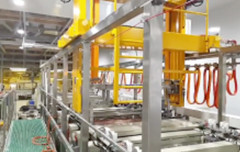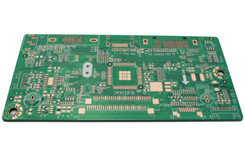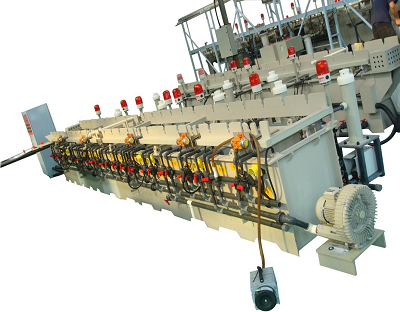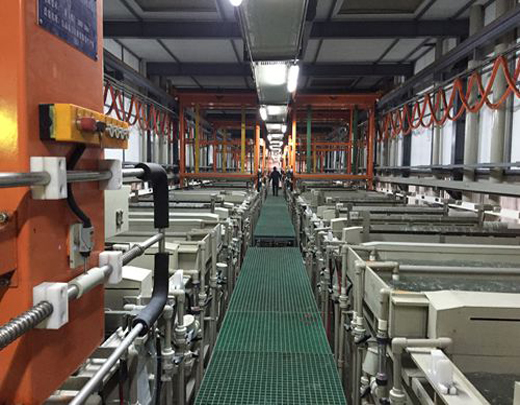There are four special plating methods in the production of circuit boards, which are row plating equipment, through-hole plating, roller linked selective plating and brush plating. This paper introduces these four special methods in detail.
1. Finger row electroplating equipment
In electroplating, it is often necessary to coat rare metals on board edge connectors, board edge protruding contacts or gold fingers to provide low contact resistance and high wear resistance. This technology is called finger row electroplating or protruding part electroplating.
In electroplating, gold is often plated on the protruding contact of the board edge connector with the inner coating of nickel. The gold finger or the protruding part of the board edge adopts manual or automatic electroplating technology. At present, the gold plating on the contact plug or gold finger has been replaced by lead plating and button plating.
2. Through hole plating
In through-hole electroplating, there are many methods to establish a satisfactory electroplating layer on the hole wall of the substrate drilling, which is called hole wall activation in industrial applications. The commercial production process of its printed circuit requires multiple intermediate storage tanks, each of which has its own control and maintenance requirements.
Through hole electroplating is a necessary subsequent manufacturing process of the drilling process. When the drill bit drills through the copper foil and its underlying substrate, the heat generated melts the insulating synthetic resin that forms the substrate of most substrates, and the molten resin and other drilling debris are accumulated around the holes and coated on the newly exposed hole wall in the copper foil.
In fact, this is harmful to the subsequent electroplating surface. The molten resin will also leave a layer of hot axis on the hole wall of the substrate, which shows poor adhesion to most activators. This requires the development of another technology similar to the chemical action of stain removal and corrosion back: oil and ink!
The ink is used to form a high adhesion and high conductivity coating on the inner wall of each through-hole, so that it does not need to use multiple chemical treatment processes. Only one application step is needed, followed by thermal curing, and a continuous coating can be formed on the inner side of all hole walls. It can be electroplated directly without further treatment. This ink is a resin based material, which has strong adhesion and can be easily bonded to most hot polished hole walls, thus eliminating the step of back etching.
3. Roller linked selective plating
Pins and pins of electronic components, such as connectors, integrated circuits, transistors and flexible printed circuits, are selectively plated to obtain good contact resistance and corrosion resistance.
This kind of electroplating method can adopt manual electroplating production line or automatic electroplating equipment. It is very expensive to select each pin individually, so batch welding must be adopted. In electroplating production, the two ends of the metal foil rolled to the required thickness are usually punched and cut, and chemical or mechanical methods are used for cleaning, and then nickel, gold, silver, rhodium, button or tin nickel alloy, copper nickel alloy Continuous electroplating of nickel lead alloy, etc.
4. Brush plating
The last method is called “brush plating”: it is an electrodeposition technology. In the electroplating process, not all parts are immersed in the electrolyte. In this electroplating technology, only a limited area is electroplated without any impact on the rest.








 Oct. 10, 2020
Oct. 10, 2020 




